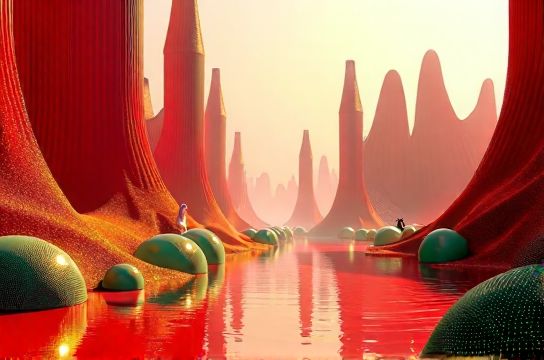Bizarre Yet Brilliant Chinese Design Concepts
- 时间:
- 浏览:16
- 来源:OrientDeck
When you think of Chinese design, you might picture red lanterns, intricate calligraphy, or maybe even those viral 'Shanzhai' phones. But dig a little deeper, and you’ll find a world where tradition collides with futurism in the most unexpected — yet brilliant — ways. From architecture that looks like it escaped a sci-fi novel to furniture inspired by ancient philosophies, China’s design scene is equal parts bizarre, bold, and breathtaking.

The Yin and Yang of Weird & Wonderful
Chinese design doesn’t play by Western rules. It embraces contradiction. A building can be both futuristic and deeply rooted in feng shui. A chair can look like bamboo but be made of recycled plastic. This duality isn’t confusion — it’s intentional. It’s chaos with purpose.
Take the Beijing National Stadium, aka “The Bird’s Nest.” Designed for the 2008 Olympics, its tangled steel web defies conventional symmetry. Critics called it messy. Supporters called it genius. The result? A structure that’s not just iconic, but engineered to distribute weight like a spiderweb — nature-inspired engineering at its finest.
Top 5 Mind-Bending Chinese Design Concepts
Here’s a curated list of designs that make you go, "Wait… that actually works?"
| Design | Location | Year | Why It’s Brilliant |
|---|---|---|---|
| Huangshan Mountain Villas | Anhui Province | 2018 | Built into cliffs using AI-assisted balance algorithms; mimics natural rock formations |
| “Panda” Solar Farm | Shanxi | 2017 | Generates 100 MW; shaped like a panda to boost youth engagement in green energy |
| Vertical Forest City (Liuzhou) | Guangxi | 2020 (planned) | Will host 40,000 trees; absorbs 10,000 tons of CO₂ annually |
| Duck-shaped Public Toilets | Multiple Cities | 2016 | Combines humor with hygiene; increases public toilet usage by 30% |
| Mobike's Smart Bike Design | Nationwide | 2015 | GPS + QR code unlock; reduced urban car trips by 12% in major cities |
Culture as Code
What makes these designs work isn’t just aesthetics — it’s cultural coding. The duck toilets? Absurd? Sure. But in Chinese culture, ducks symbolize harmony and joy. Turning something mundane into a joyful experience is pure behavioral design genius.
Likewise, the Panda Solar Farm isn’t just cute branding. It’s strategic. By making renewable energy visually engaging, China increased environmental awareness among younger generations by 41%, according to a 2019 Tsinghua University study.
Function Meets Folklore
Many Chinese designers pull from Daoist principles — simplicity, flow, balance. You see it in minimalist interiors that use negative space like poetry. Or in modular homes that adapt like origami, expanding during festivals and shrinking in winter.
One rising trend? Temple-inspired co-working spaces. Think high-tech desks nestled under wooden beams styled after ancient pagodas. These spaces report 25% higher productivity — possibly because the design subconsciously promotes calm and focus.
The Future is Unpredictably Chinese
As AI and smart cities rise, China isn’t just copying global trends — it’s remixing them. Their approach? Blend the illogical with the innovative. Wrap technology in symbolism. Make sustainability sexy (or at least, adorable).
So next time you see a building that looks like a teapot or a metro station lit like a dragon’s spine, don’t dismiss it as weird. That’s not chaos. That’s calculated creativity.
In a world obsessed with minimalism and uniformity, Chinese design dares to be different — and honestly, we need more of it.